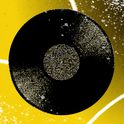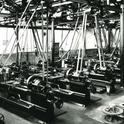Clint Eastwood plays a mean jazz piano and has scored several of his own movies; Wittgenstein designed a beautifully clean-limbed house in Vienna for his sister; George Bernard Shaw was a keen photographer, as was Samuel Butler, who also drew, painted and wrote Handelesque oratorios; Anthony Burgess composed symphonies, fugues and a ballet suite; James Joyce once hoped for a career as a tenor; Kafka scribbled haunting figurines; Picasso wrote plays; Gershwin painted portraits; Madonna has written a children's book and Roger Scruton is said to have composed an opera.
There are, in short, legions of famous creative people who have had more than just one string to their artistic bow, but very, very few of them—since the Renaissance—have won recognition for more than one of their talents. Not even Arnold Schönberg, who, despite an impressive body of work as an expressionist painter, belongs stubbornly to the world of music. Nor Satyajit Ray, whose accomplishments as musician, writer and draughtsman have all remained in the flickering shadow of his intensely moving films. No matter how distinguished an artist's second body of work may be, conventional wisdom has it that such work must necessarily be second rate.
A French idiom nods quietly in the direction of this strict division of artistic labour: le violin d'Ingres. It means a hobby, and recalls the fact that the painter, like Sherlock Holmes, was keen on playing his fiddle by way of relaxation from more substantial labours. (Man Ray once made a clever, sexy visual pun on the phrase—he photographed a seated, half-naked woman from behind in typical Ingres-esque pose, and then tampered with the print so that she appeared to have a pair of sounding holes let into her bare back.) And in the rare instances when artists have managed to force the public to concede that their talents are genuinely hybrid or multiple, the mere fact of versatility is taken to imply minor standing. Dilettantism. Conceit.
With the possible exception of Wyndham Lewis (himself only nominally British), it is hard to think of a single British writer/artist since William Blake whose drawings and paintings have won as much widespread and respectful attention as their texts. Edward Lear? Max Beerbohm? Mervyn Peake? Michael Ayrton? All have been received as charming or more than charming in their own way, yet none of them, somehow, has quite made it into the premier league of either literature or art.
Hobby paintings are seldom of any artistic merit, however agreeable as a pastime or rewarding as therapy—and the wisdom of Winston Churchill's elegant essay on the subject is not to be scorned. Where skilled, such paintings tend simply to echo the academic pictorial styles and genres of at least a generation or so earlier; when less skilled, they remain hobbled by the severe restrictions of children's drawing. By and large, such work aspires to the condition of niceness.
Hence the shock—mainly an agreeable, bracing one, but a shock for all that—of first encountering the paintings—now in an exhibition at Tate Modern—of August Strindberg: a canonical if not always greatly loved figure in world theatre for over a century, but little known as a visual artist outside his native Sweden. Even there, his paintings and photographs have only been brought to critical scrutiny in the last 30 years or so. If you approach these images in a mood of idle curiosity, expecting something of interest only as a supplement to the anguished world of The Father and Miss Julie, A Dream Play or Ghost Sonata, you will surely walk away penitent. There is nothing "literary" about them; for one thing, there is no overt human presence. And as for skill, while it is true that Strindberg was almost entirely self-taught as an artist, he executes his compositions with a passionate intensity that, at best, makes usual questions of technical expertise seem not so much irrelevant as impertinent. They are, simply, overwhelming.
As an occasional art critic, and frequenter of artistic circles in Paris and elsewhere, Strindberg was keenly aware of the revolutions in perception and representation that were breaking out across Europe at the end of the 19th century. For a time he was close to Edvard Munch, who drew and painted him, and to Paul Gauguin, who did not, but who asked Strindberg to write the introduction for one of his catalogues. Strindberg wrote back refusing the commission in terms so eloquent and searching that Gauguin published the refusal in place of a conventional introduction.
Admiration for these revolutionaries did not lead to direct emulation, though. If you want to find likely precedents for Strindberg's project, you have to go to much more unlikely masters. For British spectators, far and away the most significant of his forebears is Turner. It is not known for sure whether Strindberg ever managed to see any of Turner's work on his one and only visit to London in 1894, but everything points to his having made strenuous efforts to seek it out. He had written glowingly of Turner as early as the 1870s, unhesitatingly named Turner as his favourite English artist, and left a number of Turner reproductions in his will. Some critics have queried whether Turner truly was a direct influence on Strindberg, suggesting that it may have been more a case of the Swedish artist finding precedent and encouragement from the English genius in a path he was already following. Either way, anyone familiar with—especially—later Turner will feel on familiar ground, and still more familiar waters, when meeting Strindberg for the first time.
Too sophisticated an eye to be pallidly academic, too inventive to be trapped in gaucheness, Strindberg's most obvious connection to the wider sea of amateur painting lies in his degree of obsession. Ever since Dubuffet, Breton and others opened up the realm of Art Brut to broader scrutiny, critics have been able to consider seriously those productions now generally known as "outsider art"—the artworks of the gently potty, the eccentric and the barking mad. Strindberg was not clinically insane during the three periods of his life in which he concentrated on painting, but he was no stranger to mental illness, and in the years 1894-96 he suffered from a sequence of full psychotic episodes, generally referred to as his "inferno" crisis. His best works were made not in a state of madness, but in anticipation and memory of madness. In this, at any rate, he was a man of his times. Many of the key works of modernism were driven either by raging ideological passion or unappeasable emotional need. Strindberg had ideology to spare in his written works, but his paintings clearly align him with the needy.
His total body of work is small—about 120 works, of which about ten seem to have gone missing. He took up the brush—or, more usually, the palate-knife—at three quite distinct periods: in 1872-74, when he was in his early twenties; almost exactly 20 years later, in his early forties; and finally from 1901 to 1905, in his early to mid-fifties, a period which coincides with his writing of A Dream Play. His subject matter was, almost invariably, the sea—the sea of the Stockholm archipelago. This may sound like a straitened focus of interest, and some of the surprise of encountering the paintings for the first time comes of recognising the unexpected variety he can achieve within such constraint.
The earliest group of paintings, the 1872-74 set, is the most conventionally representational and the least interesting. Seascapes and Rocks does what it says on the label, and is mainly an exercise in subtle gradations of grey, blue and brown: waves break neatly, almost placidly on the sand; a brace of lonely trees merge their leaves with the cloudscapes; a bright yellow moon—and this is the most striking of the early works—hovers over a shoreline represented in almost geometrical terms. (Klee would probably have liked this one.) Strindberg's other, more offhand visual works of the time include little caricatures pencilled or painted into his notebooks, or manuscript pages of his plays in progress spruced up to resemble the illuminated leaves of a psaltery. They show that he was passable, not much more, as a draughtsman and illustrator.
The great leap forward came in 1892. Blizzard has no precedent in any of his earlier work. Roughly divided into three horizontal bands—purple sky, white snows, dark and multi-coloured waters—the picture comes very close indeed to the borderline which divides loosely handled but still representational work from pure abstraction. The paint is slapped and smeared on thickly in a way which implies frenzy, and yet there is a paradoxical sense of precision in the manner with which the light and the implied movements of wind and wave are handled. Whatever scientists may think of his enterprises, Strindberg persuaded himself that he was operating in a consistently scientific manner: his notebooks, his photographs, his diagrams are all part of a lifelong project to investigate and record the natural world.
Blizzard is also a threatening work—a frightening one, maybe, if you are the kind to shudder at dark, storm-wracked seas. The companion pieces of Blizzard seem to be the most overtly autobiographical: A Night of Jealousy (1893), which is about as close to pure abstraction as Strindberg ever came, also has both a literal and an urgently figurative content—another sea-storm, and the painter's troubled relations with his wife-to-be, Frida Uhl. Storm in the Archipelago, only a fraction more given to symbolism, is Strindberg's visual treatment of the Flying Dutchman myth, which he also tackled in verse and prose.
The third and final phase, which coincides with the coming of the 20th century, is the most varied. Side by side with further paintings of almost pure abstraction comes a return to more straightforwardly figurative studies of trees, lighthouses and cliffs (one has an incongruously blatant secret: turn it upside down and it changes into Strindberg's profile), and a partial return to the semi-geometric mode of sun over calm shorelines. The mood is more placid: crisis has been overcome, for now.
What is one to make of it all? In one sense, this body of work is a kind of historical freak, an anomaly. At its extreme points, it has closer affinities with paintings made half a century in the future by Jackson Pollock, Rothko and de Kooning, than with what his contemporaries were producing. In other ways it is clearly aligned with some of the contemporary forces that were gathering to manifest themselves a few years later in early abstraction and surrealism. A word thus far carefully omitted from this piece, for fear of scaring the horses, is "occultism": Strindberg was an intensely committed practitioner of the western hermetic arts, above all of alchemy, and it may well prove that his paintings are not fully intelligible until their magical components are recognised for what they are. Until those discoveries, this show is more than revelation enough.
"August Strindberg: Painter, photographer, writer" is at Tate Modern from 17th February to 15th May












